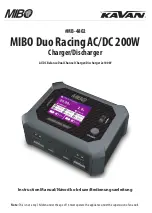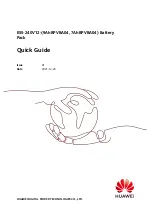
58
7. USEABLE RECHARGEABLE BATTERY TYPES
Battery type
LiPo
LiIon
LiFe
LiHV
NiCd
NiMH
Pb
Nominal voltage (V/cell
3,7
3,6
3,3
3,7
1,2
1,2
2,0
Max. charging voltage (V/cell)
4,2
4,1
3,6
4,35
1,5
1,5
2,46
Voltage for storage (V/cell)
3,85
3,75
3,3
3,85
-
-
-
Current for fast charging
<= 1C
<= 1C
<= 4C
<= 1C
1C - 2C
1C - 2C
<= 0,4C
Min. voltage after discharging
(V/cell)
3,0 - 3,3 2,9 - 3,2 2,6 - 2,9 3,1 - 3,4 0,1 - 1,1 0,1 - 1,1 1,8
Voltages in the table above are for a single cell.
The max. charge and discharge currents are expressed with the capacity value “C”.
A charging current of 1C corresponds to the capacity value printed on the battery (e.g. given battery capacity
1000 mAh, max. charging current 1000 mA = 1 A).
Always observe the correct voltage setting for battery packs with multiple cells. The individual cells of a
two-cell battery pack, for instance, can be connected both in parallel and in series.
Exceeding the battery’s maximum allowable charging current or selecting the wrong number of cells/
voltage settings carries the risk of ruining the battery. The battery also poses explosion and fire hazards!
For more information about the max. charging current and the number of cells/voltage, see the data
sheets or the label of the battery; those data have priority over the information given in the table above.
Important!
• Never charge battery packs that consist of different cells (or of cells from different manufacturers).
• Never attempt to charge non-rechargeable batteries.
• Never charge batteries that are not listed in the table above.
• Never charge batteries with integrated electronics.
• Never charge batteries that are still connected with other devices (e.g. a speed controller).
• Never charge damaged or swollen batteries.
















































